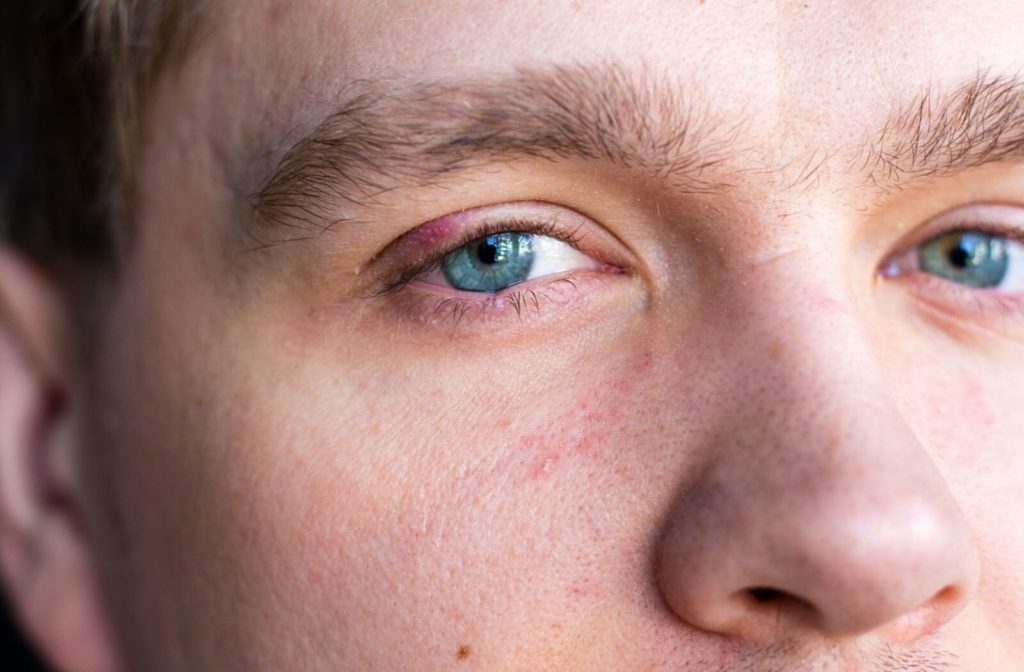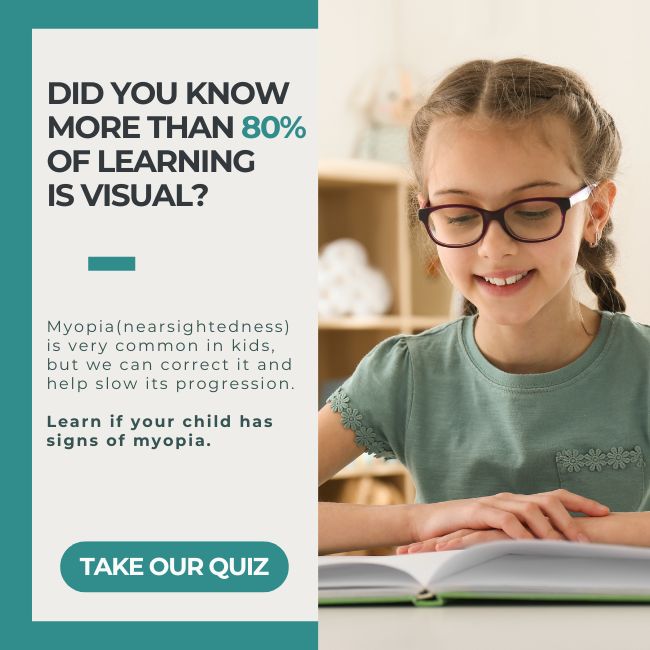Many of us have experienced the red, uncomfortable bump called a stye on an eyelid at some point. While stress doesn’t directly cause a stye, as the typical cause is a bacterial infection, stress can certainly be a contributing factor with its potential effect on the body’s immune system.
Stress is an unavoidable part of life, but its impact on our health can be profound. When we experience stress, our bodies undergo a series of physiological changes. The “fight or flight” response is triggered, releasing stress hormones like cortisol and adrenaline. While this response is helpful in short bursts, chronic stress can wreak havoc on our immune system.
But decreasing stress levels aren’t the only answer to preventing or treating styes. A stye resolves on its own in many cases. But there may be some circumstances where you should seek the advice of your eye doctor for treatment. They can perform a comprehensive eye examination to determine other potential causes or problems if the stye doesn’t resolve.
Understanding Eye Styes
An eye stye, medically known as a hordeolum, is a common and usually harmless condition affecting the eyelid. It appears as a small, red, and painful bump, often resembling a pimple or boil. Styes can occur on either the upper or lower eyelid and may even develop inside the eyelid.
Causes of a Stye
The primary cause of eye styes is typically a bacterial infection. These bacteria naturally reside on our skin and can invade the eyelids’ oil glands or hair follicles, leading to inflammation and the formation of a stye. Poor hygiene practices, such as touching your eyes with dirty hands or not removing makeup before bed, can increase the risk of developing a stye.
Difference Between Internal & External Styes
External styes develop at the base of the eyelashes and are usually visible on the outer surface of the eyelid. On the other hand, internal styes form within the oil glands and are less visible but can be more uncomfortable. Both types share similar causes and symptoms but may require different treatment approaches.
Common Signs & Symptoms of Eye Styes
Recognizing an eye stye is relatively straightforward due to its distinctive symptoms. The most common signs include a red, swollen bump on the eyelid, tenderness or pain around the affected area, and increased tearing or eye discharge. Styes can cause a feeling of heaviness in the eyelid or sensitivity to light in some cases.
How to Differentiate from Other Eye Conditions
Although eye styes are easy to spot, it’s essential to differentiate them from other eye conditions that may present similar symptoms. Conditions like chalazion (larger, painless lumps caused by blocked oil glands) or blepharitis (inflammation of the eyelid margins) can be confused with styes. If you experience persistent or worsening symptoms, it’s advisable to seek professional medical advice for an accurate diagnosis.
Stress & the Immune System
A weakened immune system means our bodies are less capable of fighting off infections, including those that cause styes. Let’s explore how stress affects eye health and contributes to the development of these painful lumps.
The Effects of Stress on Eye Health
It’s no secret that stress can lead to various health issues, but did you know it can also affect your eyes? Stress can cause various eye problems, such as dry eyes, blurred vision, and even styes. When our body is under constant stress, it can lead to inflammation and increased susceptibility to infections.
Styes develop when the oil glands in the eyelids become blocked and infected. While stress isn’t a direct cause, it can contribute to this by weakening the immune system, making it easier for bacteria to invade and cause infection. Additionally, stress can lead to habits like rubbing your eyes, which further increases the risk of developing styes.
The Importance of Proper Eye Care
While managing stress is crucial, proper eye care is also vital in preventing styes. Here are some essential eye care tips:
Maintain Good Hygiene
Wash your hands regularly and avoid touching your eyes with dirty hands. Keep your eyelids clean by gently washing them with a mild soap and water.
Be Mindful of Eye Makeup
Avoid using old or contaminated eye makeup, as it can introduce bacteria to your eyes. Always remove makeup before bed to prevent clogging the oil glands in your eyelids.
Use Warm Compresses
Applying a warm compress to your eyelids can help unclog oil glands and reduce the risk of styes. Do this daily, especially if you’re prone to developing styes.
Contact Us for Treatment Advice
Styes may seem like minor inconveniences, but they can be pretty bothersome. Understanding the link between stress and styes is crucial for prevention and management. Reducing stress through relaxation techniques, maintaining a healthy lifestyle, and practicing proper eye care can help lower your chances of developing these uncomfortable eye infections.
Remember, a holistic approach to health is essential. You can enjoy better overall well-being and healthier eyes by taking care of your mind and body. Contact our team at Insight Eyecare today if you’re experiencing a stye or similar condition. We’re happy to discuss your treatment options and examine your eyes if necessary.







